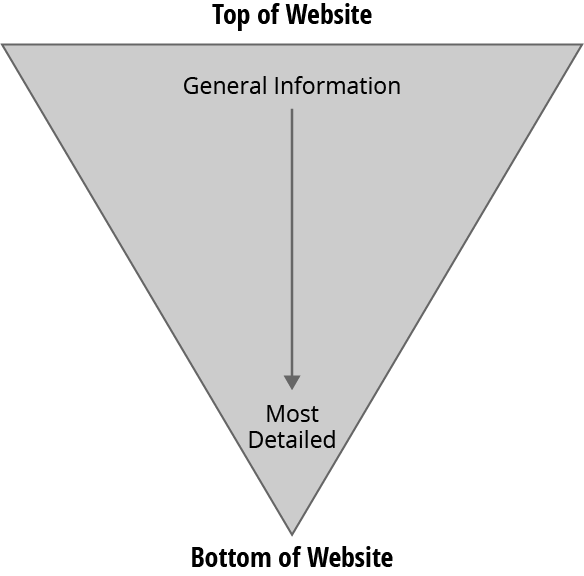Writing for the Web
Best Practices
It can be difficult to find the right text to add to your website. It can lead you to ask questions such as: how much text should there be?, will my users read the text?, and what can I do to optimize text for the web?. The following tips and tricks can help send you down the right path.
Why?
Your website is there because it serves a purpose. Whatever that purpose is, knowing who your audience is and how to cater your content to that audience is important to keeping your users engaged. Having well-written content also increases your credibility. You want your website to serve the purpose it was meant to serve.
How?
1. Know your audience
Keep in mind who you are writing the content for. What exactly are they looking for and how do you keep them engaged on your website?
2. What are your goals?
What is the main purpose of your website? What content needs to be included in order to meet your goals for your website?
3. Organize your Content
Make content concise, scannable and objective. The Nielsen Norman Group did a study on how users read on the web1. They found that a website is far more usable when the content is short and to the point, easy to read quickly and doesn’t have a lot of marketing language.
4. Tips and Tricks
- Chunk your content
- Break your content down into bullets, lists or small chunks of information
- Simplicity is key
- Don’t be too wordy
- Informal writing is easier to read
- Use the active voice
- Images should help support words
- Use the inverted pyramid model. The most broad and important information should go
at the top of your webpage
- Your website should get more detailed and less important as the user scrolls down
- This article on Jimdo.com2 has more information on the inverted pyramid and other best practices for writing.
5. Consider Copyright
Make sure you are giving credit where credit is due. See the page on copyrights for more information.
